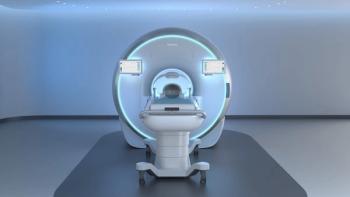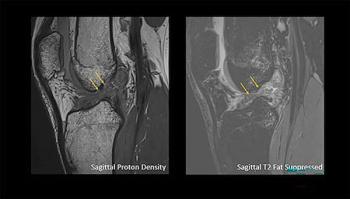
Report from ARRS: Ultrasound pins down source of stump pain in amputees
Sonography can accurately detect the causes of stump pain in amputees, according to researchers in the U.K. Investigators say ultrasound findings could guide management, help educate patients about their condition, and allow prosthesis design customization.
Sonography can accurately detect the causes of stump pain in amputees, according to researchers in the U.K. Investigators say ultrasound findings could guide management, help educate patients about their condition, and allow prosthesis design customization.
Images from the Beijing Paralympic Games or those of a Humvee driving by an improvised explosive device in Iraq could fade from memory in seconds. But for many athletes with physical disabilities as well as survivors of bomb blasts, the pain afflicting the stump of a lost limb may never fade.
Stump pain impairs function and mobility and may seriously undermine an amputee's quality of life. Finding the source of pain is thus crucial to provide proper treatment and relief.
MRI, alone or combined with x-ray, is often the imaging modality of choice in the investigation of stump pain. Because of the multiple abnormalities that can be found in any one patient, however, it may be difficult to identify the most relevant cause of pain with MRI alone, said principal investigator Dr. Marian O'Reilly, a consultant radiologist at Kingston Hospital in Surrey.
"With ultrasound, the soft-tissue abnormalities can not only be demonstrated but, by using probe pressure to reproduce the patient's symptoms, the clinical relevance of the findings will often be apparent," O'Reilly told Diagnostic Imaging. "In addition, a standard MRI examination will only demonstrate the larger neuromas, and this study found that the degree of pain does not correlate with neuroma size."
O'Reilly and colleagues evaluated over an 18-month period 90 amputated limbs in 79 patients with stump pain who underwent ultrasound with linear probes. Previous research suggests stump pain is related to the response of the bone and soft tissues to trauma, surgical treatment, and underlying disease processes. The investigators found the three main causes of stump pain in study subjects were neuromas, new bone formation, and infection.
They also found that overuse injuries such as muscle tears, tendinosis, and secondary degenerative disease were common causes. They released findings at the 2008 American Roentgen Ray Society meeting in Washington, DC.
Researchers identified 68 neuromas in 40 patients but found the degree of pain did not correlate with neuroma size. Immature heterotopic new bone formation was the main cause of pain in six patients, while mature bony spurs were the main cause in seven and a contributing cause in five. Soft-tissue infection and nonspecific inflammation/edema were the main cause of pain in 11 and six patients, respectively.
Overuse injuries included muscle tears, tendinosis, and degenerative joint disease. Other causes of pain were bursae, soft-tissue calcifications, bony erosions, Baker's cyst, and tender scarring. Nonlocal causes included spondylolisthesis with nerve root compression and recurrence or exacerbation of preexisting disease.
Using ultrasound findings, clinicians can prescribe appropriate rehabilitation and treatment, O'Reilly said. Prosthetists working at her institution found ultrasound results helpful for the design and customization of prosthesis for individual patients. Patients were interested in knowing more about their limb, the alteration of the anatomy, and the location of any abnormalities.
"This increased their confidence in wearing their prosthesis, which can then be adapted to increase their comfort and activities," she said.
Further studies are needed to validate the use of ultrasound on design and customization of prosthetic devices, said Dr. Levon Nazarian, a professor of radiology at Thomas Jefferson University Hospital in Philadelphia.
Study findings confirm, however, that ultrasound is safe, accurate, and cost-effective to diagnose the causes of stump pain, he said. Ultrasound gives MSK radiologists excellent spatial resolution plus the ability to correlate findings with the patient's symptoms in real-time.
"You are able to use probe pressure and feedback from the patient, so an objective source of pain can be isolated and investigated," Nazarian said.
For more information from the Diagnostic Imaging archives:
Newsletter
Stay at the forefront of radiology with the Diagnostic Imaging newsletter, delivering the latest news, clinical insights, and imaging advancements for today’s radiologists.




























